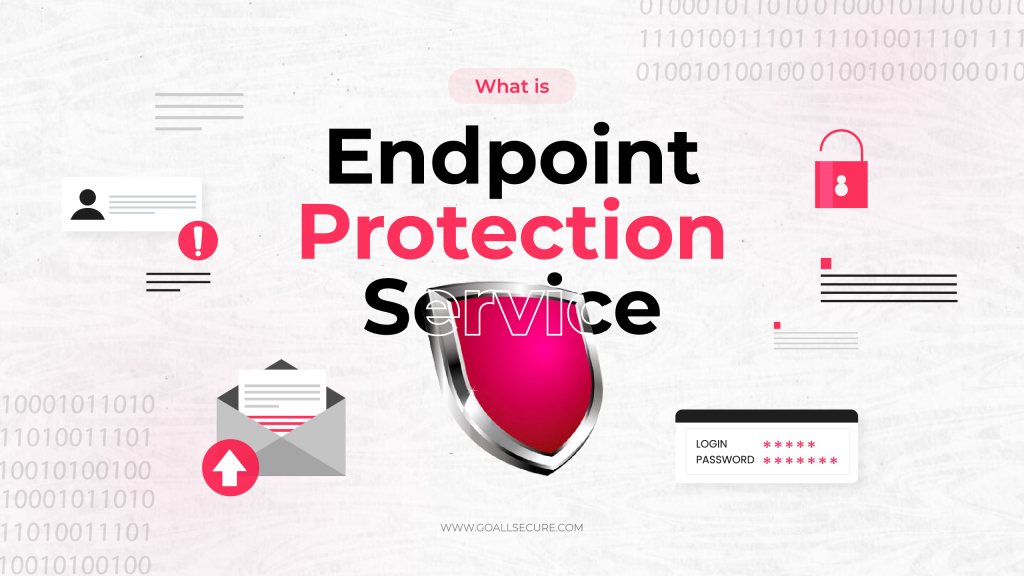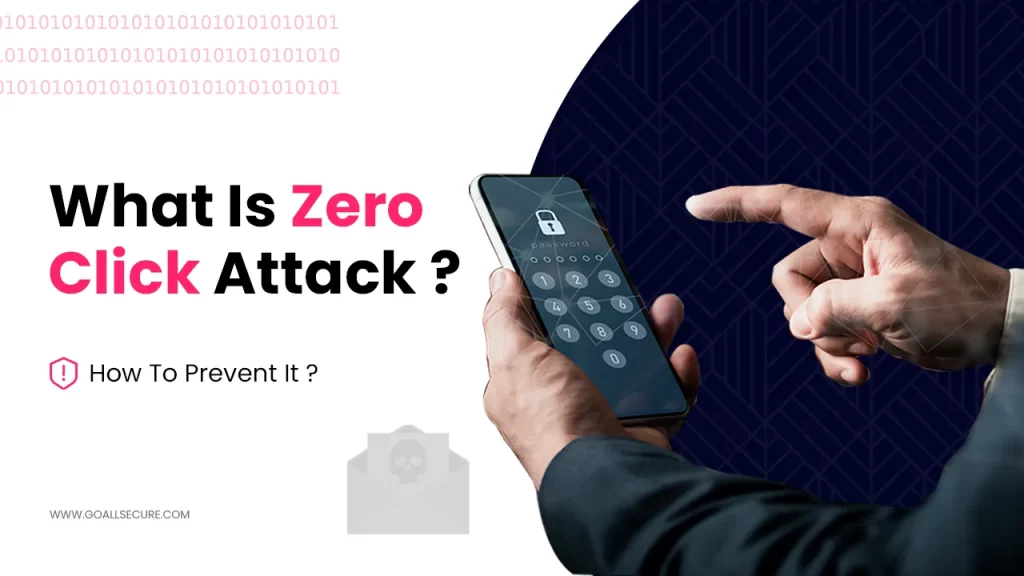An increasing and worrisome cybersecurity issue in the current day and age is a zero-click attack, in which hackers take advantage of existing flaws to compromise a device without requiring any input from the user. These advanced attacks are more harmful and covert as they don’t need the target to click a link or download a file. Zero-click attacks easily circumvent typical security safeguards. Their sophistication and frequency are only increasing with technology, posing a severe threat to both users and cybersecurity experts.
Zero-click attacks have existed since the early days of cyber threats, but they have become much more common within the past ten years. Cyberattacks require human involvement, which is a drawback. Attackers explored more complex ways to get around cybersecurity protections as they developed, leading them to create zero-click tactics. Numerous well-publicised zero-click attacks in recent memory have drawn attention to these threats’ potential dangers and capabilities. These include flaws in operating systems like iOS and Android that affect millions of users globally and assaults on messaging services like WhatsApp. Zero-click attacks have a significant and diverse influence, frequently having dire and protracted repercussions. This blog discusses zero-click attacks, what they are, why they should worry you, and what you can do to be safe.
What Is a Zero Click Attack?
Zero-click attacks are advanced cyber threats that don’t need the target to interact to succeed. These attacks are carried out without the victim’s knowledge or consent, in contrast to conventional attacks that depend on user action, such as clicking a link or downloading an attachment. Zero-click attacks have a very distinctive mechanism; they take advantage of flaws in hardware or software and let hackers run harmful code remotely. The potential impact is enormous because the vulnerabilities targeted are frequently found in widely used operating systems or apps. A successful zero-click attack can have serious repercussions, including complete control over the compromised device, espionage, surveillance, and unauthorised access to sensitive data. This degree of access will definitely result in serious security and privacy lapses.
The stealth of zero-click attacks is one of its distinguishing features. They leave minimal trace, which makes detection very difficult. The attacks are successful because of their stealth, enabling them to go for extended periods without being detected. Zero-click attacks are infamous for targeting journalists, activists, and political people; these attacks are frequently made possible by advanced spyware such as Pegasus, which NSO Group created. These incidents demonstrate how these attacks could be employed in sophisticated cyberespionage. There once was a time when zero-click attacks were uncommon and highly complex, but as software systems have grown more complicated and profitable for cybercriminals to use, they have become more common. They pose a serious threat to cybersecurity, necessitating the development of more sophisticated defences.
How Zero Click Attacks Work?
Zero-click attacks exploit flaws in the victim’s device in place of social engineering techniques to control victims. They rely on software apps that analyse data, including WhatsApp and iMessage, and weaknesses in device operating systems. Security settings on mobile devices and software apps allow data parsing to confirm and establish the reliability of the source. Zero-click attacks leverage these configurations to access a target’s device sneakily. The vulnerabilities in your device, like a gap in data verification, unsecured network protocols, memory corruption flaws, etc., are used to get access to your system. Cybercriminals may find profitable targets due to persistent zero-day vulnerabilities that have not yet been patched. These zero-day vulnerabilities can be used by skilled hackers to launch cyberattacks that don’t require your involvement.
Typically, malicious actors employ specifically designed material, such as a secret text message or picture file, to introduce malicious malware onto the device. But that isn’t the case here. Applications that offer voice calling or messaging are frequently the target of zero-click attacks because these services are built to accept and process data from unreliable sources. Some of the common targets of zero-click attacks are:
- Mobile Devices
- Messaging and Communication Apps
- Email Clients
- IoT Devices
Zero-click attacks are based on the operational exploitation of software vulnerabilities. Operating systems, chat services, and any other programme that automatically processes incoming data may be vulnerable to these flaws. Once an attacker finds such a vulnerability, they can create a customised payload that launches malicious malware when the target system processes it without requiring the victim to do anything. Other cyberattacks, which depend on deceiving users into jeopardising their own security, stand in stark contrast to this direct exploitation. One needs to investigate the several stages of zero-day attacks, from vulnerability exploitation to the covert accomplishment of malevolent goals, in order to understand their structure fully. Here is how a 0-click attack is carried out:
- The first step is to find a weakness, which could be in a messaging app or email software.
- Next is taking advantage of the newly found vulnerability. Cybercriminals develop a payload that helps them in triggering the said vulnerability remotely.
- Now, the most important part is delivering the payload. It will most definitely be a covert operation involving sending well-designed messages or packets, leveraging network protocols, and using various other passive methods to get the job done.
- After the successful delivery of the payload comes the part where the vulnerability is triggered. This means the sent packet triggers the exploit without alerting the victim. Now, the hacker is in the system.
- Once inside the system, the malicious actor aims to achieve its set goals. These goals can be stealing data, installing malware on the system, silent surveillance, etc.
- Final step would be preserving the secrecy. This is an easy task for zero-click attacks as they are designed keeping in mind that they need to be undetectable and steer clear from triggering any security alarms.
After understanding the process that malicious threat actors deploy to get into your systems, one thing becomes obvious: Everyone needs vulnerability assessment and penetration testing; they are a must if you intend to be safe in the digital realm.
Common Vulnerabilities Exploited in Zero-Click Attacks
Zero-click attacks are called advanced cyberattacks, as they use hardware or software flaws to execute their malicious plans. It is evident that they exploit vulnerabilities, but how these vulnerabilities are used and why they are kept unpatched for so long are some valid queries. Examining the technical details of these attacks will assist in comprehending how they operate. The fundamental component of a zero-click attack is the exploitation of an operating system or application security hole. Attackers look for these flaws by carefully examining the target software. What are the flaws? Well, here is the list:
- Unsecured network protocols
- Memory corruption flaws
- Buffer overflows
- Mobile OS-specific flaws
- Supply chain vulnerabilities
- Hardware vulnerabilities
- Cryptographic vulnerabilities
- Zero-day vulnerabilities
- Web application vulnerabilities
- IoT device vulnerabilities
- Software logic errors
- Insecure deserialisation
- Operating system flaws
- Third-party libraries and components
Notable Zero Click Attacks To Date
Zero-click attacks have a significant and diverse impact that frequently can have mild to disastrous outcomes. A number of substantial zero-click incidents have happened recently, demonstrating their increasing complexity and threat. The list below highlights zero-click attacks’ importance in cybersecurity by illuminating their variety of targets and effects.
WhatsApp Breach
This notorious hack was caused by a missed call, which took advantage of a weakness in WhatsApp’s source code architecture. Due to a missed call, the attacker was able to install spyware in the data being transferred between two devices using a previously undiscovered and unpatched cyber vulnerability. The spyware activated itself as a background resource when it was loaded, deep within the device’s framework.
NSO Group’s Pegasus Spyware
One of the most well-known examples is the Pegasus spyware developed by the Israeli business NSO Group. Pegasus was found to be able to infect cell phones with a zero-click exploit, giving hackers access to emails and messages and the ability to turn on the phone’s camera and microphone. Global political leaders, activists, and journalists have been targeted via Pegasus.
Project Raven
The UAE’s offensive cyber operations unit, known as Project Raven, is made up of contractors who are former US intelligence operators and Emirati security personnel. They reportedly exploited an iMessage bug by using a programme called Karma. Karma gained access to the iPhones of activists, diplomats, and opposition foreign leaders by sending carefully designed text messages that included images, emails, text messages, and location data.
Apple Zero-Click, Forced Entry
In 2021, a human rights activist from Bahrain had their iPhone compromised by potent malware supplied to governments. Researchers discovered that the attack had circumvented Apple’s security measures, which were designed to withstand stealthy intrusions. After examining the activist’s iPhone 12 Pro, they found that a zero-click exploit had been used to compromise it. The zero-click attack leveraged an undiscovered security flaw in Apple iMessage, which was used to distribute Pegasus malware.
Looking at these 0-click attack examples, one is filled with uncertainty and fear. Zero-click attacks can cast doubt on the effectiveness of the present cybersecurity protocols and shake customer faith in hardware and software providers. After such occurrences, the need for more robust security protocols and practices becomes abundantly clear, driving developments in cybersecurity technologies and policy.
How to Prevent Against Zero Click Attacks?
When seen in a larger context, zero-click attacks exacerbate the state of unease that exists in the digital space. Furthermore, the number of possible targets for zero-click attacks has increased due to the widespread usage of internet-connected gadgets. Everything could be vulnerable, including IoT and smartphone devices, greatly expanding the attack surface for possible exploits. On top of that, the biggest concern is that the target has no chance to recognise the threat and decide not to fall for it because user engagement is not required. That being said, defence against these attacks is not insurmountable. Because there are so many possible targets, more substantial and more sophisticated security measures are necessary. You can follow proactive and preventive steps to mitigate the threat of zero-click exploits. Here is what you should do to be safe:
Update Apps and Devices Regularly
Unpatched vulnerabilities in your device or system are exploited by zero-click exploits. Updating apps and devices can curtail the susceptibility of devices to these assaults. Always make sure that your IoT devices are well-protected and updated.
Install Anti-Malware and Anti-Spyware Software
Devices are frequently infected with malware and spyware through zero-click attacks. The effects of a successful infection can be dwindled by using anti-spyware and anti-malware programmes that can identify and remove these viruses.
Frequent Vulnerability Scanning and Remediation
One can stop attackers from taking advantage of known flaws by searching through all internal networks and infrastructure that is visible to the public for weaknesses. Vulnerabilities should be fixed as soon as feasible, with priority given according to risk assessment.
Deploy Endpoint Protection
To prevent zero-click attacks, implement endpoint detection and response (EDR) technologies, etc.
Advanced endpoint security systems can recognise and stop zero-click attack by looking for unusual activity, analysing system behaviour, and thwarting efforts to run dubious code.
Establish Segment Networks
Segmenting networks enables the isolation of crucial parts, which limits malware’s lateral movement and possible harm. If strict access controls based on user roles are established, one can curb the damage from possible zero-day exploits.
Employ MFA Techniques
This additional security layer can help prevent zero-click attacks. This system can stop an attacker from using your credentials to log into your accounts and launch another kind of attack, even if they manage to gain access through a weakness in software.
Stop Downloading from Untrusted Websites
Before releasing software, app stores carefully examine programs and the developers behind them. They take these steps to guarantee that the applications they give users are authentic and have few, if any, bugs that could endanger their security. It is not possible to guarantee the same degree of dedication from third-party stores. The same is the case with downloading PDFs and random files from the Internet.
Lastly, keep up with news on cybersecurity (so you know when a new zero click attack is discovered).
Conclusion
Zero-click attacks are becoming a major worry in the quickly changing cybersecurity environment of today. They are relevant and important because of a number of important factors. First, because these attacks are covert, they can get past conventional security measures that are mostly meant to thwart threats that call for user engagement. This craftwork puts a large percentage of us internet users at risk, irrespective of our awareness or attentiveness, and makes zero-click attacks challenging to detect. Secondly, zero-click attacks pose a grave threat to cybersecurity because they require a comprehensive strategy incorporating preventive, investigative, compensatory, and corrective measures to defend against them. GoAllSecure can help you with it. Our team will assist you in reducing the risks associated with Zero Click attacks by implementing a defence-in-depth strategy. With our multiple levels of security safeguards in place, your organisation’s cybersecurity posture will improve. Our cybersecurity services are designed to fit your budget and business needs. If you have any queries regarding penetration testing, contact us at +91 85 2723 7851 or +44 20 3287 4253.

















 TRAVEL & HOSPITALITY
TRAVEL & HOSPITALITY HEALTHCARE
HEALTHCARE RETAILS & ECOMMERCE
RETAILS & ECOMMERCE BANKING & FINANCIAL
BANKING & FINANCIAL AutoMobile
AutoMobile MANUFACTURING
MANUFACTURING FOOD
FOOD EDUCATION
EDUCATION



